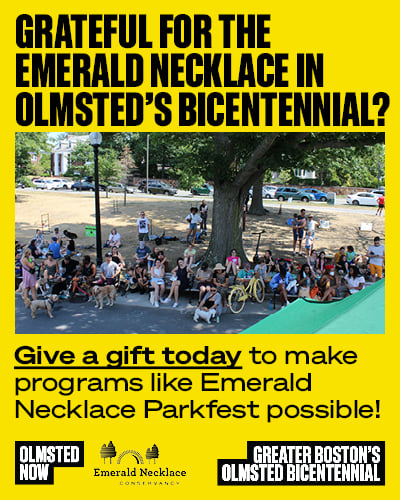Land Acknowledgement
For millennia, people have been stewarding the lands and waters that now comprise the many parks across Greater Boston. Before John Winthrop and the Puritans arrived from England and established Boston in 1630, the area’s Indigenous inhabitants numbered in the tens of thousands. Boston sits within the traditional territory of the Massachusett people and has long served as a site of exchange among communities including the Massachusett, Wampanoag and Nipmuc. Prior to colonization, they developed maize horticulture and managed forests and waters for hunting and fishing, sharing land communally and using it seasonally. Today, derivations of their place names, inspired by the landscape, are still in use: in Algonquian, Messatsoosec (later Massachusett) means “great hills,” referring to the Blue Hills, and Mashau-womuk, identifies the sheltered estuary near the bay, referred to as Sha um ut (Shawmut), the hilly peninsula upon which Puritans founded Boston.
Material evidence suggests particular relationships with the landscape. The Arnold Arboretum preserves stone projectile points found onsite from the Middle Archaic Period (around 8,000 years ago). These and other arrowheads reveal prehistoric hunting activities and migration patterns. In 1913, at the southeast corner of the Boston Common, excavation work for the Boylston Street subway unearthed an ancient fish weir—a woven fence of branches used to corral fish in the currents of shallow estuary waters. Analysis showed the aligned wooden stakes dated back more than 5,000 years and were maintained for about 1,500 years, before sea levels shifted and other fishing methods were developed. This Indigenous technology to harness tidal flows far precedes Olmsted’s work upon the tidal marsh he named “the Fens”; it continues to inspire annual celebrations of the care, inhabitance and protection of these lands today.
Fundamental to Olmsted Now is the commitment to both acknowledge these Indigenous legacies and actively seek right relations with local Indigenous leaders as a way to re-center understandings of shared open space. Initial questions to discuss with Massachusett, Wampanoag and Nipmuc leaders include:
How can Olmsted Now directly support local Indigenous community needs?
How can local Indigenous insights on stewardship actively inform bicentennial goals and outcomes?
Beyond the bicentennial, how can partnerships among stewards of Greater Boston’s parks and Indigenous traditions align toward deeper education and appreciation of these lands?
This acknowledgement will evolve with ongoing learning. Please contact us with questions, comments and recommendations.


